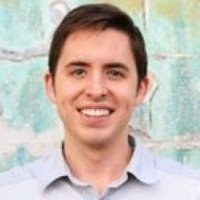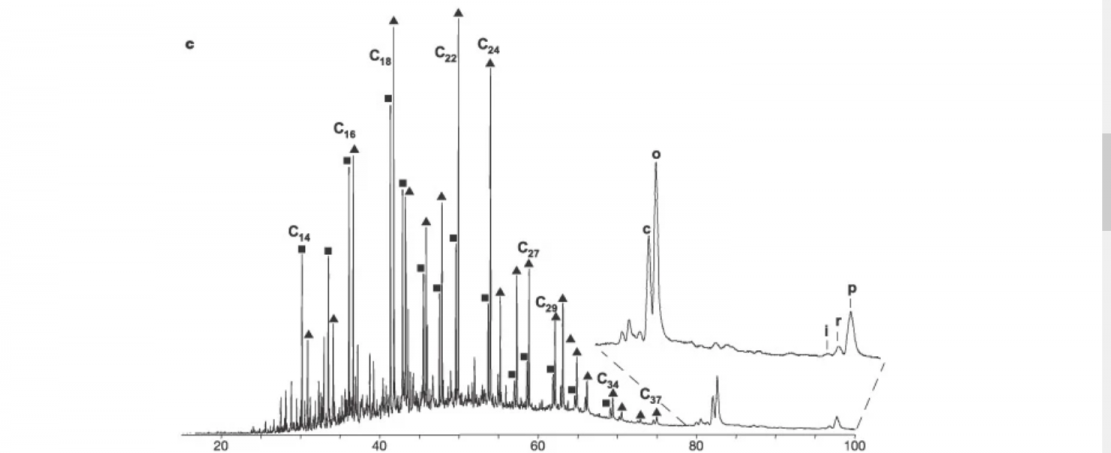
Reader
- About
-
- Email Address
- s.a.bowden@abdn.ac.uk
- Telephone Number
- +44 (0)1224 273467
- School/Department
- School of Geosciences
Biography
Stephen is an Organic Geochemist who researches chemcial fossils and sedimentary organic matter and develops novel analytical technologies for chemical analysis. He has worked on international expeditions as a lead sedimentologist and geochemist. He manages a laboratory that conducts consultancy and research. His students start and run businesses and play leading roles in industry, education and their communities.
Memberships and Affiliations
- Internal Memberships
-
- Course Coorinator GL 4031 (Geochemistry and Geofluids), - a course that along with GL3018 teaches biomarkers, thermal maturiation, biodegredation, basin modelling
- Geochemistry Laboratory Manager
- Member of School Health and Safety Committee
- Radiation Protection Supervisor & Laser Protection Supervisor
- University Enterprise and Innovation Champion
- External Memberships
-
Commercial
- Scientific Advisor – RAB Microfluidics; 2017 - present
- Technical Advisor – Glensol Enviroklean Solutions 2020 – present
Education
Visiting Researcher Kobe University 2021–2022:
Scholastic
- Associate Editor – Frontiers in Organic Geochemistry 2022- present
- Associate Editor – Journal Marine and Petroleum Geology 2019- 2022
- Reviewing Editor – Experimental Results 2019- 2023
Key Participation in International Science
- International Ocean Discovery Program 368 - Lead Geochemist 2017
- International Ocean Discovery Program 370 - Lead Sedimentologist 2016
- Integrated Ocean Drilling Program 337 - Ship's Organic Geochemist 2013
- Integrated Ocean Drilling Program 331 - Ship's Sedimentologist 2011
- NASA Haughton Mars Project - Geologist 2006
- Research
-
Research Overview
Important Projects and Publications
A range of my research is below. Something recent, something old, something commercial and something applied. Maybe something for anyone; if resources permit (normaly time is limiting factor) I am always willing to collaborate. You can also check out my LinkedIn page - I particularly like catching up with old students and hearing from like-minded strangers (the stranger the better)!
Most recent paper (2024): The perturbation of PAHs on mosses in Aberdeen, Scotland, as a consequence of social restrictions imposed during the COVID-19 pandemic. doi.org/10.3389/fgeoc.2023.1320096
My most recent paper is about the measurement of PAH on mosses during the COVID-19 lockdown. Aberdeen does not have its own Environmental PAH monitoring station so instead mosses were used as sampling devices. The changes in pollutant PAH matched changes in traffic as Scotland went in and out of different levels of restriction.

Figure above shows the increases in MMW PAH on mosses in Aberdeen after the Covid-19 restrictions were lifted.
Most cited paper (2005): Biomarker evidence for green and purple sulphur bacteria in a stratified Palaeoproterozoic sea. doi.org/10.1038/nature04068
My most cited paper is about the earliest fossil occurrence (chemical fossil) of a green sulphur bacteria, publsihed at a time when chemical fossils in precambrian rocks were more uncertain than they are now. It involved careful chemical analysis by GC-MS.

Figure above shows the 134 m/z ion chromatogram - the little i is the peak for isorenieratane, evidence for green sulpuhr bacteria.
Most impactful paper (2009): Determination of the asphaltene and carboxylic acid content of a heavy oil using a microfluidic device. doi.org/10.1039/b814495h
This is my most important paper from an economic perspective as its ideas were used to start a company (RAB microfluidics) that attracted > £2 million in start-up funds. The paper is about the design, testing and building of a microfluidic chip and a method to analyse heavy oil. Later the method was used to commercialise a sensor for lubricating oil analysis.

From blue sky idea to product - took a very hard working PhD student (Dr Alabi, 10+ years and input from many others)
Consultancy Work (2023): Detection of nano-particles in oils during waterflood experiments
A local SME asked me to develop a method and use it to detect nano-particles in oil at sub 1% concentrations. The method was applied to both core flood experiments and real time adsorption experiments.
- Publications
-
Page 1 of 4 Results 1 to 25 of 97
Thermal History And Source Rock Maturity Modelling Of The Akri-bijeel Area, Nw Zagros Foldbelt, Kurdistan Region, Northern Iraq
Journal of Petroleum Geology, vol. 48, no. 2, pp. 134-155Contributions to Journals: Articles- [ONLINE] DOI: https://doi.org/10.1111/jpg.12883
- [OPEN ACCESS] http://aura.abdn.ac.uk/bitstreams/386e21a2-f20f-440d-a687-7915a2b25884/download
Molecular and mineral biomarker record of terrestrialization in the Rhynie Chert
Palaeogeography, Palaeoclimatology, Palaeoecology, vol. 640, 112101Contributions to Journals: ArticlesDifferentiating α-moganite, silanol and α-quartz by Raman spectroscopy
Physical Chemistry Chemical Physics, vol. 26, no. 10, pp. 8195-8199Contributions to Journals: Articles- [ONLINE] DOI: https://doi.org/10.1039/D3CP05330J
- [OPEN ACCESS] http://aura.abdn.ac.uk/bitstreams/bdb41b50-f11d-45a1-902f-b5c23ed8d1d6/download
- [ONLINE] View publication in Scopus
Shallow structure and late quaternary slip rate of the Osaka Bay fault, western Japan
Progress in Earth and Planetary Science, vol. 11, 8Contributions to Journals: Articles- [ONLINE] DOI: https://doi.org/10.1186/s40645-024-00607-0
- [OPEN ACCESS] http://aura.abdn.ac.uk/bitstreams/07f77fea-8264-4bc7-b35b-374892203fbf/download
- [ONLINE] View publication in Scopus
Red or green: Overprinting of the climatic signal in Miocene sediments, South China Sea (IODP Expedition 368, Site U1502)
Terra Nova, vol. 35, no. 6, pp. 497-505Contributions to Journals: Articles- [ONLINE] DOI: https://doi.org/10.1111/ter.12670
- [OPEN ACCESS] http://aura.abdn.ac.uk/bitstreams/b3aa033f-3874-4bc6-b0c9-e1c90efce205/download
- [ONLINE] View publication in Scopus
Trace element geochemistry in the earliest terrestrial ecosystem, the Rhynie Chert
Geochemistry, Geophysics, Geosystems , vol. 23, no. 12, e2022GC010647Contributions to Journals: Articles- [ONLINE] DOI: https://doi.org/10.1029/2022GC010647
- [OPEN ACCESS] http://aura.abdn.ac.uk/bitstreams/59d72491-71d4-463f-ade4-c80365c51742/download
- [ONLINE] View publication in Scopus
The effect of supercritical CO2 on failure mechanisms of hot dry rock
Advances in Geo-Energy Research, vol. 6, no. 4, pp. 324-333Contributions to Journals: Articles- [ONLINE] DOI: https://doi.org/10.46690/ager.2022.04.07
- [OPEN ACCESS] http://aura.abdn.ac.uk/bitstreams/315cec75-fca2-4784-9f9a-3aa790a66950/download
- [ONLINE] View publication in Scopus
Hydrothermal generation of hydrocarbons in basement rocks, Southern Tuscany
Italian Journal of Geosciences, vol. 141, no. 2, pp. 231-244Contributions to Journals: ArticlesAnne Brontë and Geology: A Study of her Collection of Stones
Brontë Studies, vol. 47, no. 2, pp. 89-112Contributions to Journals: ArticlesLitho-Based Pore Scale Waterflooding in Carbonate Reservoirs: A Holistic Approach to Predict Displacement Efficiency
Chapters in Books, Reports and Conference Proceedings: Conference Proceedings- [ONLINE] DOI: https://doi.org/10.2118/207443-MS
- [ONLINE] View publication in Scopus
The release of petroleum from Central Africa rift basins over geological time as deduced from petroleum systems modelling
Journal of African Earth Sciences, vol. 183, 104319Contributions to Journals: Articles- [ONLINE] DOI: https://doi.org/10.1016/j.jafrearsci.2021.104319
- [ONLINE] View publication in Scopus
Influence of Early Low-Temperature and Later High-Temperature Diagenesis on Magnetic Mineral Assemblages in Marine Sediments From the Nankai Trough
Geochemistry, Geophysics, Geosystems , vol. 22, no. 10, e2021GC010133Contributions to Journals: Articles- [ONLINE] DOI: https://doi.org/10.1029/2021GC010133
- [OPEN ACCESS] http://aura.abdn.ac.uk/bitstreams/78ad31d7-b40d-4cd6-b892-10e17df1f6bf/download
- [ONLINE] View publication in Scopus
Depositional environment of the upper triassic baluti formation in gara anticline, kurdistan region, north iraq: Insight from microfacies and biomarker characteristics
Iraqi Geological Journal, vol. 54, no. 1E, pp. 29-42Contributions to Journals: ArticlesTemperature limits to deep subseafloor life in the Nankai Trough subduction zone
Science, vol. 370, no. 6521, pp. 1230-1234Contributions to Journals: Articles- [ONLINE] DOI: https://doi.org/10.1126/science.abd7934
- [OPEN ACCESS] http://aura.abdn.ac.uk/bitstreams/f514f54d-ae6c-40e6-b1b4-7b8edbca04b7/download
- [ONLINE] View publication in Scopus
Diagenetic and Reservoir Quality Variation of Miocene Sandstone Reservoir Analogues from Three Basins of Southern California, USA
Journal of earth science, vol. 31, no. 5, pp. 930-949Contributions to Journals: Articles- [ONLINE] DOI: https://doi.org/10.1007/s12583-020-1289-7
- [ONLINE] View publication in Scopus
Modelling the Shimokita deep coalbed biosphere over deep geological time: Starvation, stimulation, material balance and population models
Basin Research, vol. 32, no. 5, pp. 804-829Contributions to Journals: Articles- [ONLINE] DOI: https://doi.org/10.1111/bre.12399
- [OPEN ACCESS] http://aura.abdn.ac.uk/bitstreams/a3cf83ba-3f9a-46a8-ba54-fd6cd17ea0e0/download
- [ONLINE] View publication in Mendeley
- [ONLINE] View publication in Scopus
Diagenesis and reservoir quality in high-resolution sandstone sequences: An example from the Middle Jurassic Ravenscar sandstones, Yorkshire CoastUK
Marine and Petroleum Geology, vol. 118, 104426Contributions to Journals: Articles- [ONLINE] DOI: https://doi.org/10.1016/j.marpetgeo.2020.104426
- [ONLINE] View publication in Scopus
Evidence in the Japan Sea of microdolomite mineralization within gas hydrate microbiomes
Scientific Reports, vol. 10, 1876Contributions to Journals: Articles- [ONLINE] DOI: https://doi.org/10.1038/s41598-020-58723-y
- [OPEN ACCESS] http://aura.abdn.ac.uk/bitstreams/2aa209a3-44af-4d56-aadd-c422179b28d6/download
- [ONLINE] View publication in Scopus
Hot fluids, burial metamorphism and thermal histories in the underthrust sediments at IODP 370 site C0023, Nankai Accretionary Complex
Marine and Petroleum Geology, vol. 112, 104080Contributions to Journals: ArticlesThe thermal imprint of continental breakup during the formation of the South China Sea
Earth and Planetary Science Letters, vol. 531, 115972Contributions to Journals: Articles- [ONLINE] DOI: https://doi.org/10.1016/j.epsl.2019.115972
- [OPEN ACCESS] http://aura.abdn.ac.uk/bitstreams/4aa933b9-87a9-4d1b-bd99-9f39701d317d/download
- [ONLINE] View publication in Scopus
The application of surface enhanced Raman scattering to the detection of asphaltic petroleum in sediment extracts: deconvolving three component-mixtures using look-up tables of entire surface enhanced Raman spectra
Analytical Methods, vol. 11, no. 46, pp. 5846-5856Contributions to Journals: Articles- [ONLINE] DOI: https://doi.org/10.1039/C9AY01859J
- [OPEN ACCESS] http://aura.abdn.ac.uk/bitstreams/718d0ef4-7322-481b-b551-476837f15c29/download
- [ONLINE] View publication in Scopus
Emplacement of oil in the Devonian Weardale Granite of northern England
Proceedings Of The Yorkshire Geological Society, vol. 62, no. 4, pp. 229-237Contributions to Journals: ArticlesRealtime lubricating oil analysis to predict equipment failure
Chapters in Books, Reports and Conference Proceedings: Conference Proceedings- [ONLINE] DOI: https://doi.org/10.2118/195708-MS
- [ONLINE] View publication in Scopus
Naturally propped fractures caused by quartz cementation preserve oil reservoirs in basement rocks
Terra Nova, vol. 31, no. 4, pp. 343-347Contributions to Journals: Articles- [ONLINE] DOI: https://doi.org/10.1111/ter.12385
- [OPEN ACCESS] http://aura.abdn.ac.uk/bitstreams/16b71899-ae82-41dc-bc32-3053169df666/download
- [ONLINE] View publication in Mendeley
Detecting ancient life: Investigating the nature and origin of possible stromatolites and associated calcite from a one billion year old lake
Precambrian Research, vol. 328, pp. 309-320Contributions to Journals: Articles
